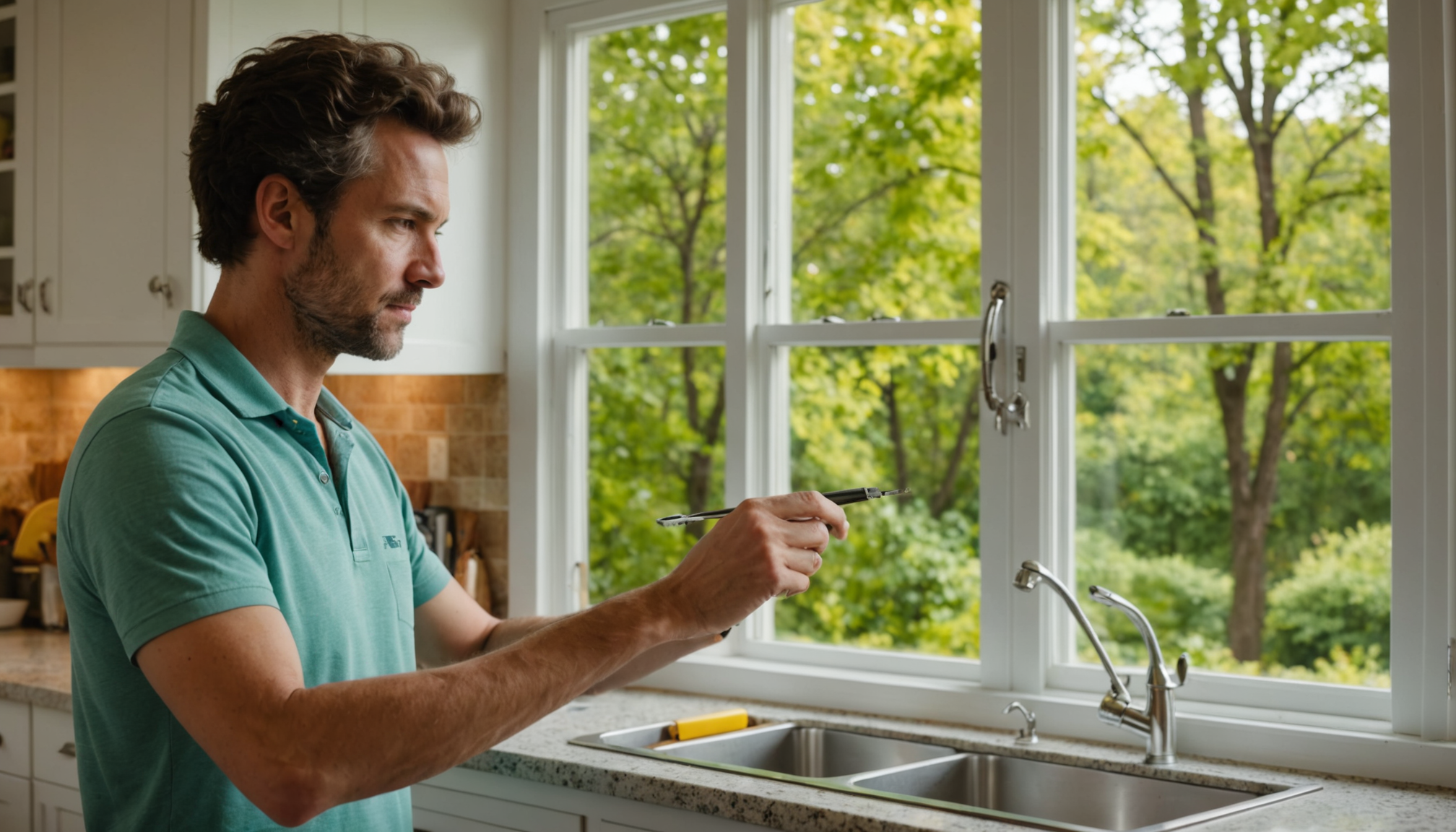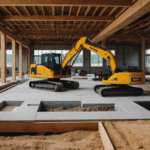When it comes to maintaining the integrity and functionality of your home, inspecting your windows is crucial. Different types of window inspections exist to cater to varied needs and contexts, each serving a unique purpose in ensuring that your home’s windows are up to par. Understanding these types of inspections can help homeowners effectively plan maintenance tasks and spot potential issues early on, saving time and resources in the long run.
First, routine visual inspections are the simplest and most common type. These inspections involve a superficial yet critical examination of all windows in your home, usually performed by the homeowner, to check for any obvious signs of damage, wear, or deterioration. The goal is to identify visible problems, such as cracks in the glass, chipping paint, or warped frames, which can compromise your home’s insulation and security. Regularly inspecting the windows in high-traffic areas like the kitchen ensures that any arising issues are promptly addressed, preventing them from escalating into costlier problems.
For a more thorough evaluation, functional inspections delve deeper into the operational aspects of windows. This type of inspection checks whether each window opens and closes smoothly, locks securely, and has no draft seeping through when shut. A functional inspection is essential for both old and modern windows as it helps maintain energy efficiency, thereby reducing utility bills. Conducting these inspections at least twice a year, particularly before the extreme seasons of summer and winter, is advisable.
Next, energy efficiency inspections target the insulation performance of windows. These are increasingly important in the context of sustainable home practices. During this inspection, thermal imaging tools may be used to detect heat loss or gain through the window areas. By identifying poorly insulated windows, homeowners can take steps to enhance their home’s energy efficiency, contributing to lower energy costs and a reduced environmental footprint.
Moreover, structural inspections may be necessary for older homes or in the event of structural changes to the property. Such inspections typically require professional input to assess the integrity of the window frame, sealant conditions, and alignment. A well-executed structural inspection can reveal underlying issues such as rot or infestation that might not be evident through a typical visual inspection.
Finally, let’s consider post-event inspections, which are conducted after specific events like severe storms or construction activities adjacent to the windows. These inspections aim to quickly assess any immediate damage or potential risks posed by unforeseen external pressures.
To better understand the different inspection types and their purposes, consider the following comparison:
| Inspection Type | Purpose | Frequency |
| Routine Visual | Identify visible damage and deterioration | Bi-annually |
| Functional | Ensure proper operation and sealing | Annually |
| Energy Efficiency | Assess insulation and thermal performance | As needed |
| Structural | Evaluate structural integrity | As needed |
| Post-Event | Check for damage after specific events | After events |
Choosing the appropriate type of inspection requires a clear understanding of the specific needs and circumstances of your home. Incorporating a suitable inspection routine into your home maintenance plan can significantly enhance the longevity and efficiency of your windows, ultimately forming a cornerstone of a comprehensive domestic care strategy.
Common issues and how to spot them
Windows are often prone to a variety of issues that can affect their performance, appearance, and durability. Familiarizing yourself with these common problems can allow you to detect them early, often during regular home maintenance or visual checks, and take corrective actions before they escalate.
First and foremost, condensation between the panes is a prevalent issue, especially in double or triple glazed windows. This is a clear sign of seal failure. The insulating gas between the panes escapes, leading to reduced thermal performance. To spot this, look for persistent fogging or moisture build-up inside the panes after cleaning the window surfaces.
Another common problem is sticking windows, which often indicate issues with the frames or excess paint. Windows that are difficult to open or close can be tested simply: if you encounter resistance or have to use excessive force, the frames may need adjustment or lubrication. In some cases, warped frames may need to be replaced.
Cracks or chips in the glass, though visibly obvious, are not to be underestimated. They compromise the window’s structural integrity and can lead to further damage, especially when exposed to temperature fluctuations. Run your fingers along the glass surface and edges to feel for any irregularities that your eyes might miss.
Drafts are another issue that can significantly impact energy efficiency. To test for drafts, light a candle or an incense stick and hold it close to the edges of the window on a breezy day. If the flame or smoke wavers, air is likely entering through gaps, indicating the need for caulking or weatherstripping to seal leaks.
Next, check for any signs of water damage around the windows. Look for discoloration, peeling paint, or mold on the walls or window sills, which signal that water is infiltrating. This often occurs due to poor sealing or structural issues with the window or wall itself.
On older and wooden-framed windows, rot is a persistent concern. Inspect the frames for softness, discoloration, and flaking paint, which could hint at moisture damage leading to rot. Using a screwdriver, gently probe the suspected areas; if the wood easily yields, it may be time for repairs or replacement.
Lastly, hardware issues such as rusty or broken locks and handles can affect window function and home security. Regularly check the operational parts of your windows. If locks don’t work smoothly or are visibly corroded, they may need lubricating or replacing altogether.
By being vigilant and routinely inspecting your windows, especially in areas like the kitchen where moisture levels might be higher, you can maintain a safe and energy-efficient home environment. Recognizing these common issues is crucial, particularly in modern homes with intricate window designs, where precision in maintenance can significantly prolong the life and effectiveness of your windows.
Tools needed for effective inspection
Having the right tools at your disposal is essential for conducting a thorough and effective window inspection. With these tools, homeowners can ensure their window maintenance routines are precise and comprehensive, saving both time and money by identifying issues early.
First and foremost, a good flashlight is indispensable. Even during daylight inspections, a flashlight helps illuminate hard-to-see areas, such as tracks, seals, and the undersides of frames, revealing dust, debris, or potential water damage that might otherwise go unnoticed.
A magnifying glass is another valuable tool in your inspection kit. It allows for close examination of the window surfaces and frames, helping you spot fine cracks, chips, or other imperfections that contribute to drafts or weakened structural integrity.
Another key tool is a moisture meter, which can be particularly useful in locations like the kitchen where humidity tends to be higher. This device helps detect any moisture present in the window sills, frames, or surrounding walls, important for preventing long-term damage like rot, mold, or structural weakening in modern homes.
Additionally, a putty knife or a similar flat-edged tool can help in assessing the condition of caulking and seals. By running the edge along the seams, homeowners can check for flaking or gaps that require repair, ensuring the windows remain airtight and energy-efficient.
A reliable level or spirit level ensures the proper alignment of windows. This tool can identify misaligned frames that might affect operation, thus suggesting whether re-adjustment or professional recalibration is needed.
For functional testing, having a small, handheld fan can be an innovative way to test for drafts. Holding the fan near closed windows lets you tactically feel for unintended airflows that hint at inefficient seals or cracks.
A tape measure helps in assessing the dimensions of window components, ensuring any necessary replacements or repairs match the existing scale perfectly. This is particularly useful when considering upgrades to more energy-efficient options, such as triple glazing or special coatings.
A screwdriver set is essential for tightening any loose frame screws or adjusting handles and locks during the inspection itself. This tool ensures that all mechanical components of the windows operate smoothly for both security and usability.
Last but not least, having a thermal imaging camera, although an investment, provides valuable insights into a window’s energy efficiency. By capturing thermal images, one can easily visualize areas of heat loss or cold infiltration, identifying exactly where insulation improvements should be made to maximize modern energy savings.
Equipping yourself with these tools facilitates not just a comprehensive inspection of your windows but also a proactive approach to maintaining the integrity and performance of your home’s openings. Whether you are conducting a regular inspection or reacting to signs of wear in a specific room like the kitchen, these tools ensure precision and reliability in your findings, empowering you to make informed decisions about necessary maintenance or repairs.
Step-by-step window inspection process
Starting your window inspection process can seem daunting, but breaking it down into manageable steps makes it easy and effective. To begin, gather all the necessary tools outlined in the previous section, as having everything at hand ensures a smooth procedure without unnecessary interruptions.
Start your inspection by visually examining each window for obvious signs of wear or damage. Focus on the glass for any cracks, chips, or fogging, suggesting a problem with the seals. A magnifying glass can be particularly handy here, helping you catch minor imperfections that can develop into larger issues.
Once the visual check is complete, open and close each window to assess its functional integrity. A properly functioning window should slide or pivot with ease and lock securely without requiring excessive force. During this check, pay special attention to any strange sounds or resistance, as these can indicate alignment problems or debris in the track, particularly in high-use areas like the kitchen.
Next, test the window frame and sealant condition using a putty knife or similar tool to gently probe for disintegration. Check the caulking for cracks or gaps, applying light pressure to ensure it’s intact and not brittle. This step is vital to ensure energy efficiency by preventing drafts and moisture intrusion.
Focus on detecting any drafts. Light a candle or use an incense stick, holding it close to the window edges to spot any movement that signals leaks. This method is simple yet revealing, allowing you to identify areas where seals may have failed and leading to increased energy costs.
Water damage, a common culprit in compromising modern window installations, should also be checked. Look for discoloration, mold, or peeling paint around the frames and sills, especially in rooms like the kitchen where moisture levels might be higher. A moisture meter can provide precise readings, alerting you to any underlying issues that need addressing.
Verify the alignment of each window using a level tool. Poor alignment can lead to functional problems, making windows difficult to operate and causing uneven sealing, which impacts overall maintenance. If misalignment is detected, you might need professional assistance to make precise adjustments.
Don’t neglect the hardware; ensure all locks, handles, and hinges function properly. Loose or rusted components can be tightened or replaced with a screwdriver set, securing the window for both safety and efficiency.
For a comprehensive assessment of energy efficiency, consider using a thermal imaging camera. This powerful tool provides insights into potential drafts and points of heat loss, helping you identify where additional insulation or upgrades are needed, enhancing your home’s modern energy performance.
Follow this step-by-step process routinely to maintain your windows, catching small issues before they develop into larger problems. Each of these steps is crucial to preserving the integrity, functionality, and efficiency of your windows, ultimately contributing to a more comfortable and cost-efficient living environment.
When to call a professional
Knowing when it’s time to bring in a professional for window maintenance can save you from escalating costs and ensure your windows are in optimal condition. While many issues can be detected and solved through routine inspections and using the right tools, there are scenarios where expert intervention is necessary.
One of the primary indicators for calling a professional is when you notice significant structural damage that affects the window’s integrity or your home’s safety. This includes severe rot in wooden frames, substantial warping that hinders operation, or any visible sagging or misalignment that suggests foundational problems. Attempting to fix such issues without professional expertise might exacerbate the problem.
Moreover, if you’ve performed a thermal inspection and noticed consistent and significant heat loss or cold infiltration, a professional should verify the extent of the problem and recommend solutions, such as replacements with more modern, energy-efficient windows. Particularly with older homes, upgrading to triple-glazed windows or installing specialized coatings often requires professional assessment and installation to maximize energy savings.
Persistent drafts, even after resealing efforts, and water infiltration leading to mold or structural damage are also clear signs that a professional’s touch is warranted. Water stains, discoloration, or mold around the windows often indicate that the issues extend beyond simple seal failure, calling for in-depth analysis to prevent ongoing damage.
In addition, any issues with complex opening mechanisms or hardware in modern windows are best handled by someone with experience to ensure all components function smoothly and securely. If you lack confidence in your ability to correct problems with locks, hinges, and handles, consulting a professional is prudent to maintain the windows’ integrity and security features.
Finally, if your home undergoes significant renovations or the installation of new windows altogether, professional involvement is crucial for ensuring that everything aligns with building codes and functions efficiently within your home’s systems. This is particularly true for structural adjustments, where expertise ensures both safety and compliance.
Bringing in professional help at the right time can provide insights that enhance your window’s longevity and efficiency, as well as help sustain your home’s overall comfort and safety.
In conclusion, inspecting your windows on a regular basis is an essential part of maintaining your home’s energy efficiency and safety. While many issues can be managed with the right tools and knowledge, knowing when to call a professional can save you from further complications. A well-structured inspection routine ensures your windows are functioning at their best, contributing to a modern, comfortable, and cost-effective living space.


